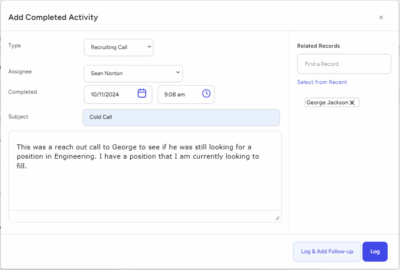In my previous blog post, I described nine ways that recruiters can spot a “dead horse employer.” In this blog post, I’ll now describe 11 ways that you can eliminate “dead horse employers.”
1. Obtain complete information. You will probably need to talk to the hiring manager more than once. A personal visit may be required. But you eventually need complete information.
2. Set up a grading system. Grade your hiring manager’s job orders so that not only will you work on those job orders most likely to pay off, but also so you can remember what a hiring manager said originally and how the JO changes as time moves forward.
3. Establish start date and work interviewing procedure backward from that start date. You say, “When is the last day that you (the hiring manager) can reach, so that on the next day something bad happens if the new person is not on-board by then? In other words, what is your drop-dead date?” Keep in mind that there are three people involved in everything we do: the hiring manager, the candidate and the recruiter. Each party needs a segment of time. So, take the three time segments, add them together, and back them off from the drop-dead date to determine if this job order is realistic enough for you to work.
4. Establish hiring process, i.e., who, when, where. Also, time periods between interviews. You want this leverage in case something goes awry. Having written down what is going to take place and in what time frame, allows you to keep better track and control of the hiring process.
5. How many people must be interviewed before you can make an offer? If the hiring manager needs to see six people, they may have a directive from “higher up” to see that number, so don’t send them five if that’s all you have because they will still have to wait for that sixth candidate to show up. If you take on an assignment and they tell you how many people they need to see, whatever that number is, make sure you get that number to the hiring manager.
6. Make sure internal transfer or promotion has been explored and any possibility eliminated. Some recruiters don’t want to do this because they’re afraid that they’ll lose the job order. But isn’t it better to lose the JO at the beginning of the process than at the very end? That’s when it hurts the most. By learning this information at the beginning, you haven’t expended a great deal of time, energy, and money, and you can cut your losses earlier. Also, you now have the ability to be able to write job orders to refill the slot from whence the transfer or promotion originated.
7. How many people have been interviewed? You need to know this to give you an idea of the “quality” of the job order. If it is “unfillable,” then this will be an indication. If 25 people have been interviewed and the position has not been filled, you need to know why.
8. How many offers extended, turned down, and why? This gives you some insight into the knockout factors and the general health of the job order.
9. Why were some candidates eliminated prior to an offer? As above, this will further cover the knockout factors.
10. How many dollars have been budgeted to fill this position? You want to make sure the employer is being realistic by knowing how much they are prepared to spend. If the hiring manager says the salary is $60-70,000, but they only have $58,000 budgeted, there will be a problem. Even if they have $65,000 budgeted, where will your fee come from?
11. Where does the money come from? Whose budget? You need to talk to the person who has control of the purse strings because this is the person who will ultimately pay you. This person has the final power to say “yes” or “no” and you need to talk to them right from the beginning.
— — —
Bob Marshall of TBMG International, founder of The Marshall Plan, has an extensive background in the recruiting industry as a recruiter, manager, vice president, president, consultant, and trainer. In 2015, Bob is celebrating his 35th year in the recruitment business. Marshall can be reached at bob@themarshallplan.org or at 770.898.5550. His website is www.TheMarshallPlan.org.








